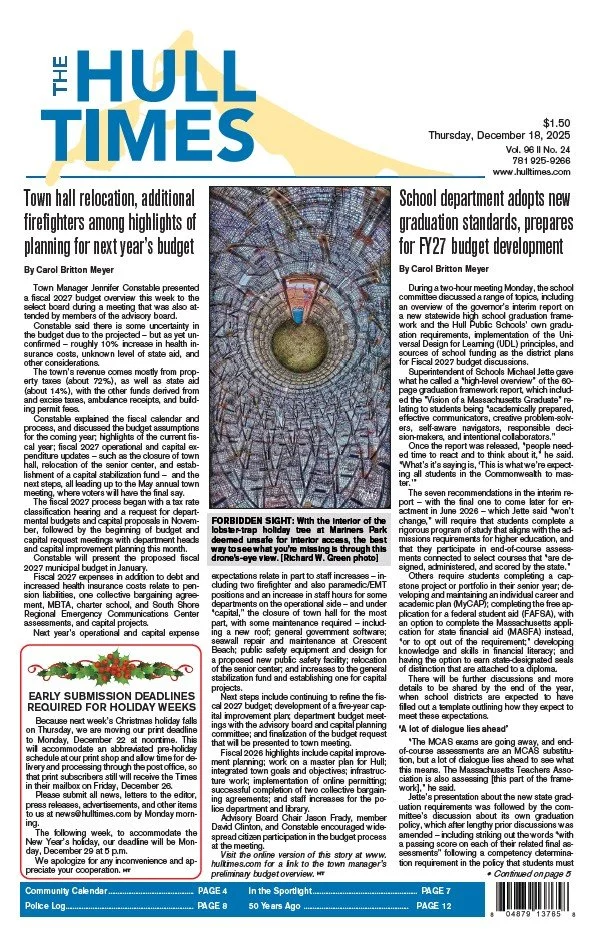Report: Hull needs more affordable housing; Plan sets five-year goals to create new units
/By Carol Britton Meyer
More than half of Hull’s existing households are cost-burdened or living at or below the poverty level, according to the recently completed draft five-year Housing Production Plan.
As the next step in addressing Hull’s affordable housing needs, the select board and planning board met in joint session Wednesday night to hear an update on the plan, with a focus on providing more senior- and family-friendly housing. Public input was considered in the development of the plan.
The Metropolitan Area Planning Council collaborated with Community Planning and Development Director Chris DiIorio, other town officials, and the HPP Advisory Group to craft the draft the plan for review and submit for approval by the state Department of Housing and Community Development.
“DHCD looks for planning board support before a community submits their HPP,” Carlos Javier Montanez, a consultant with MAPC, told the boards. The planning board will review the report prior to the Aug. 1 submittal deadline and decide whether to support the plan.
Members of the HPP Advisory Group are Steven Greenberg, Matt McGonagle, select board members Irwin Nesoff and Donna Pursel, Carl Katzeff, and planning board Chair Harry Hibbard.
Select board Chair Jennifer Constable said that the fact that only 1.6% of the town’s housing stock is considered to be affordable, that 37% of Hull households are “cost-burdened,” and that 16% are at or below the poverty level – as indicated in the report – “makes it clear that we have to do more. Most of our affordable housing is under the housing authority’s control. There’s been a lot of talk about attracting families to town and meeting the housing needs of our seniors, and it’s clear that we need to act, and yesterday.”
The term “cost-burdened” refers to households that pay more than a third of their monthly income on housing.
During the process of developing this plan, various sites were reviewed for further exploration for residential development potential, including town-owned land, underutilized properties, and possible “opportunity sites.”
Included on the list of properties “considered for future exploration and potential future voluntary redevelopment” are the former aquarium building; Nantasket Beach Overlay District (possible “oceanfront inclusionary” zoning district),Paragon Boardwalk mini-golf and amusement center; Hull Redevelopment Authority property, the town-owned parking lot at XYZ Streets; “additional land” at McTighe Manor (Atlantic House Court), commercial recreation zoning districts, the Kenberma area (with no specific site identified); and town-owned properties. These were listed as possibilities, with nothing decided at this time.
Pursel said the HPP Advisory Group “had some great conversations around the subject of accessory dwelling units [often referred to as in-law apartments]. How could we do that?” noting that “a lot of thought went into this plan.”
Even though the town has a “finite amount of land and houses available, and it seems as though the town is a day late and a dollar short, there are [affordable housing] opportunities [as outlined in the HPP],” she said.
The report sets forth several goals for affordable housing production. (See related story.)
“This plan will be an effective tool in developing affordable housing in town,” DiIorio said. “It contains a lot of good strategies to move us forward.”
Approval of the plan by DHCD, which is about a three- to four-month process, would mean that the town would be eligible to receive certain grants.
In the meantime, Town Manager Philip Lemnios suggested, pending planning board approval of the HPP, that town officials “begin to strategize and decide who is responsible [for which part of the plan] and how to implement it.”
Even though DHCD does not require select board approval of the plan, there was a motion to endorse it as presented, with whatever additions/changes the planning board might suggest. The vote was unanimous.












